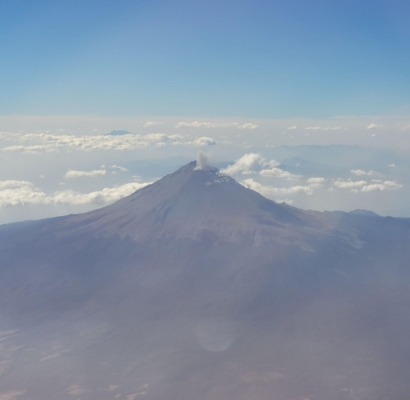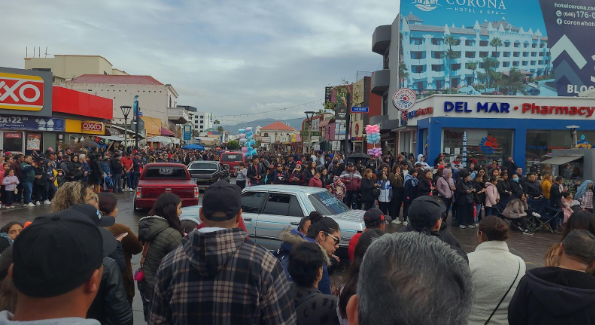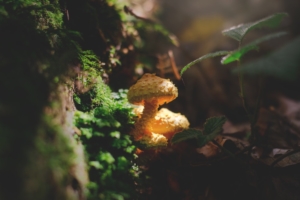
BANG! The front axle of my front-wheel-drive car slams into an unmarked speedbump on Route 160 just outside of Paraiso, Costa Rica. Foolishly trying to save money by not investing in a more expensive AWD option, my feisty and slightly airborne little Mitsubishi returns to the road with a ‘groan’ and I remind myself that I have to focus on the drive. But that’s easier said than done. I’m surrounded by spectacular mountain scenery; working villages of Ticos on their way to school; the not-occasional farm animal procession; and a humid heat that dulls the brain into submission. And I’m here for one reason – I seek to meet the owners, operators and facilitators of psychedelic retreats all over Central America.

As the new kid on the block, I believe it very important to get to know your customers intimately, and there’s nothing more intimate than showing up at their front door. Thus I spent February, 2023, circumnavigating Costa Rica and Mexico to meet as many in-person as I could. The logistical challenges to organizing such a trip were considerable. We laid out a map; grouped retreats by drive time; contacted them to confirm their availability; booked cars, flights, and airbnb’s; bought equipment (and learned how to use it – to some degree); kissed the family goodbye, and pushed off into the jungles, deserts, beaches and mountains of some of the most scenic landscape on this earth.

Read also: There are some of the most affordable psychedelic retreats out there
Seeking, and finding, inspiration
Over the last 15-20 years, this area has witnessed an explosion of psychedelic retreats. There are retreats offering essentially any kind of plant medicine you can think of. Some adhere very closely to indigenous tradition with reverence to the Shipibo or Maria Sabina; some take pride in their modernity. Some operate as not-for-profits, some don’t. They may feature sprawling campuses, or offer just a simple room in their home. But virtually everyone I met shared one thing in common: a profound sense of responsibility. Most were beneficiaries of the power of plant medicines and were single-mindedly focused on bringing that healing and reconciliation onwards to their guests. The stories that I heard were ones of salvation. I think back to the former music industry executive who fell into addiction and saw their career crumble, only to end up slinging ibogaine in Mexico to similarly-afflicted guests. Or to an owner that suffered from the debilitating effects of multiple sclerosis and found healing in ayahuasca. Or stories of 5-MeO or Bufo-led consciousness expansion. Or to lives that, much to my personal fascination / jealousy, were lived with a purpose and focus that was genuinely inspirational.

What did I learn? Nearing the end of my 30 day journey, I found that I was encountering similar themes in the conversations I was having. Many centers were adding capacity, dealing with uninformed inquiries that wasted their time and went nowhere, searching feverishly for ceremony space, and making sure I didn’t take pictures of the outside of their buildings (lest they be found by the authorities). And I drew a few insights that are worth circulating in the hopes that they will trigger a dialogue across industry participants.
Read also: We made a list of the top 8 psychedelic retreats in Mexico
1.Guests start their journey with a huge gap in knowledge

I was privileged to have a detailed conversation with a guest at an ayahuasca center in Sayulita, just outside of Puerto Vallarta. We talked about the very nuanced purchase decision that she had just gone through, and I asked her, ‘how long were you researching before you landed on this facility?’ Her response: TWO YEARS. And while this is far too long, it made sense to me. Think of the novice psychonaut, a few shroom journeys into this new world, going to a website and reading about the Shipibo tradition. They don’t know what that is; they don’t know what other indigenous traditions may exist, where they can find them, how it will impact their experience, etc. There are many inhibiting factors facing a first-time retreat-goer: cost, safety, time, etc. But to layer on top of all this the fact that they don’t even know what questions to ask, let alone which answers are preferable, is a big stumbling block that requires very thoughtful education.
2.There is no single, best approach

My journey through 30 retreats made it quite clear that every center has a somewhat unique philosophy of care. With much of the science still early and murky, it’s difficult to say that one approach is better or worse than any others. For example, a very reputable ibogaine center in the charming backpacker town of Tepoztlan, Mexico, was adamant that their guests stay with them for no less than a month, such is the need to develop new habits. This is undoubtedly true. All things being equal, this approach would also drive the cost of a stay considerably higher as a result of the long duration. One could make the counter-argument that exposure to ibogaine with SOME on-site integration might be a preferred approach. While each individual is better served with a longer stay, more people can be treated ‘adequately’ with a shorter one. Is it better to offer an experience that adheres very closely to indigenous knowledge and traditions, or one that is almost entirely modern? Outcome data on such questions is not yet definitive. Our approach to these questions is to act as a mirror on the industry and not ‘pick winners’ – it’s not clear to us at all who that should be!
3. There are essentially three types of people visiting retreats

The first group is dealing with an acute situation, such as an addiction that can not be tamed. The second group is dealing with trauma and its derivatives (depression, anxiety, etc). They may not be clinically diagnosed, rather they often feel ‘stuck’ in their lives and seeking a path forward that other forms of therapy have not delivered. They are predominantly women, upper-middle class, Western, with kids, a husband (who is regrettably much like me), a dog – suffering their way through the American dream. A final group of true psychonauts are likely not on their first journey and are seeking new growth and awareness.
Many small business owners struggle with business fundamentals like marketing and consumer segmentation. You can be the world’s most empathetic Curandero but rarely is that person also good at search engine marketing. Many of the retreats I spoke with did not have a clear understanding of the types of people that tend to visit their retreat (or their KIND of retreat).
4.Retreats emphasize their natural setting…but the clients may be less enthusiastic

The plucky little backpacker town of Dominical in southern Costa Rica, acts as something of an epicenter for retreat activity in the area. As far as I could tell, there’s an almost countless number of psychedelic retreats, large and small, operating within a 30 minute drive from here. And their settings are spectacular, set within majestic mountains, near waterfalls, with yoga platforms looking down on the jungle canopy. Many retreats feature their natural settings with pride and speak to the harmony brought on by psychedelic journeys in that environment. But in our very non-scientific study of our burgeoning list of retreats and user inquiries, centers located close to a city tend to outperform in terms of user interest. Some of the most successful retreats we feature are located right in the heart of tourist cities such as Puerto Vallarta or Playa Del Carmen. Perhaps this is not surprising – if the user doesn’t know how to think about selecting retreats, they will default to things they DO understand, like the proximity of the retreat to the airport that they arrived at. For centers that are much more difficult to access (Dominical, for example, is a four hour drive from San Jose International), it’s critical that they emphasize exactly why it’s worth the extra leg in the journey. As someone who drove approximately 1,200 miles on Costa Rican roads during my travels, being able to take an Uber to a meeting was quite liberating.
Read also: There are some of the top psychedelic retreats in Jamaica
5. Google Maps doesn’t work in Costa Rica
It can not differentiate between a road and a hiking trail. Just trust me on this one.

6. There’s a lot of finger-pointing – and that hurts us all

As in any community, there’s hot goss in the retreat world, and unfortunately, it tends to focus on terrible outcomes. Examples of physical assaults, suicides or psychosis and hospitalizations come up frequently in conversation. By no means is this a topic to take lightly – a guest’s safety could not be more important. The challenge is to assess what’s true and what isn’t; what happened despite the best efforts and professional approach of operators, and what should have been avoidable. In dialogue with a Costa Rica-based retreat operator, the subject of a rumoured suicide at a different retreat popped up, and was very quickly followed by an assertion that that retreat is not taking preparation or safety precautions seriously. I had to point out (thank you, Freakonomics) that correlation is not causation. With thousands of guests running through that facility annually, most of whom present with some sort of acute mental health issue, the odds of a guest committing suicide while involved in the program would be astronomically higher than in the general population. The challenge with finger-pointing is that those accusations can become viral headlines which end up hurting everyone in the industry (including me). A better solution is needed.
7. Individuality aside, the industry needs standardization (or regulation)

In conversation with a leading ayahuasca center in the Nicoya Peninsula of Costa Rica, I discovered that a movement is afoot to organize the country’s aya centers. There is a fair amount of anxiety amongst the operators in Costa Rica. While ayahuasca is ‘unscheduled’ and thus outside legislative purview, this could change if it became necessary to address any problems. One thing I discovered about retreat operators is that they have all interpolated their own training and experience into their ‘preferred’ approach. This makes every center somewhat unique and caused many centers to push back on a concept of ‘standardization’. But I can think of no better way to keep the eye of the regulator at bay than for the industry to show that it is being precautionary and administering to its own problems. Whatever degree of standardization that makes sense should be embraced universally. Perhaps that means distance to a medical facility; it could mean a standardized approach to an intake or preparation; or it could mean maintaining a certain minimal level of medical training onsite at all times. Regulation is a bit of a drag, but if one bad actor can hurt everyone with one well-publicized mistake, it’s in everyone’s interest.
Psychedelic retreats continue to explode into the public consciousness and are expanding into new geographies all the time. My hope is that the industry will start to organize, in whatever way possible, so that this important source of healing can continue to propagate. After all, I need an excuse to visit South America in February 2024.
About the Author:
Jon Kamin is the visionary CEO behind Frshminds, a pioneering marketplace dedicated to psychedelic retreats and experiences. With a mission to foster exploration, understanding, and informed choices within the realm of psychedelics, Frshminds stands as the ultimate “trip advisor” for psychedelic retreats.





